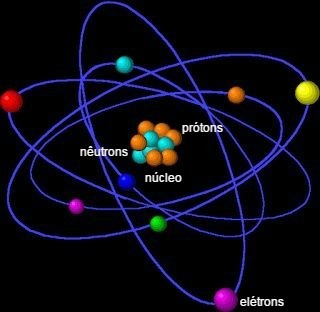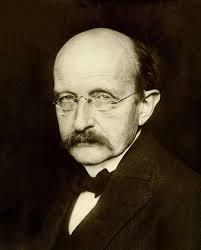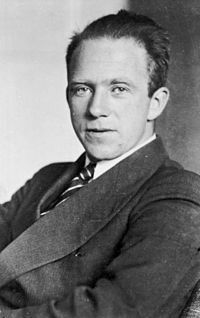Quantum Physics, Quantum Theory or Quantum Mechanics are terms that indicate a part of modern physics that emerged in the 20th century.
It comprises several phenomena associated with atoms, molecules, subatomic particles and the quantization of energy.

atom structure
Many theories have been disseminated over the years and some of them focus on the studies of quantum physics and spirituality. However, the main focus is on microscopic studies.
Note that in addition to physics, chemistry and philosophy are areas of knowledge that have benefited from the theoretical contributions of quantum physics.
Top Thinkers
The main theorists who contributed to the growth and consolidation of this area were Planck, Einstein, Rutherford, Bohr, Schrodinger and Heisenberg.
1. Planck

The German physicist Max Planck (1858-1947) is considered the “father of quantum physics”. This name corroborates his contributions in the field of quantum theory. Thanks to him, this area was created and consolidated by other theorists.
His main focus was the studies of electromagnetic radiation. Thus, he created one of the most important constants in quantum physics, called the Planck's constant.
With a value of 6.63. 10-34 J.s, it is used to indicate the energy and frequency of electromagnetic radiation. This constant determines the energy of a photon, through the equation: E = h .v.
Read too:
- Photoelectric effect
- Electromagnetic waves
2. Einstein

Albert Einstein (1879-1955) was a German physicist. Along with Planck, he represents one of the leading theoretical physicists in the field of quantum theory.
His works related to the Theory of relativity.
This theory focuses on the concepts of mass and energy being expressed by the equation: E = mc2.
For Einstein, the universe is constantly expanding. By studying Newton's Laws, the scientist may find gaps.
Thus, his studies on space and time were essential to build the modern view of reality in the field of Physics.
In 1921 Einstein received the Nobel Prize in Physics, for his studies on theoretical physics and the photoelectric effect.
3. Rutherford

Rutherford (1871-1937) was a New Zealand physicist who contributed to the advancement of quantum physics.
Its main theory is related to the radioactivity, more precisely with the discovery of alpha and beta rays.
Therefore, Rutherford revolutionized the atomic theory and his model is used to this day.
That's because he identified the nucleus and the atomic particles called protons and electrons, as well as their position in the atom.
This model corresponds to the planetary system, where electrons move in elliptical orbits.
Read too:
- Rutherford Atomic Model.
- Discovery of Radioactivity.
4. Bohr

The Danish physicist Niels Bohr (1885-1962) was responsible for filling the gap found in the model proposed by Rutherford.
Thus, his work on atomic theory contributed to the correct definition of this system, as well as to the studies of quantum physics.
According to Rutherford's model, with the acceleration of atomic particles, the electron could lose energy and fall into the nucleus. However, that doesn't happen.
For Bohr, when electricity passes through the atom, the electron jumps to the next major orbit and then returns to its usual orbit.
With this new discovery Bohr also proposed an atomic theory and for this reason, it is called Rutherford-Bohr Atomic Model.
In 1922 Niels Bohr received the Nobel Prize in Physics for his studies of atoms and radiation performed.
Read too:
- Atom
- Atomic Structure
- Atomic Models
5. Schrodinger

Erwin Schrodinger (1887-1961) was an Austrian physicist. From experiments in the field, he created an equation that became known as the Schrödinger equation. In it, the scientist can perceive changes in quantum states in a physical system.
In addition, he proposed an imaginary mental experiment called “Schrödinger's Cat”. In this theory, a cat is placed in a box with a pot of poison attached to it. By quantum physics, he would be alive and dead at the same time.
Therefore, the scientist wanted to show through this experiment the behavior of subatomic particles in an everyday situation.
According to him: "This prevents us from so naively accepting as valid an "inaccurate model" for representing reality. In itself this may not incorporate anything obscure or contradictory..”
In 1933 Erwin Schrodinger received the Nobel Prize in Physics for his discoveries in atomic theory.
6. Heisenberg

Werner Heisenberg (1901-1976) was a German physicist responsible for creating a quantum model for the atom.
His studies were essential for the evolution of the field of quantum mechanics. He developed theories related to atoms, cosmic rays and subatomic particles.
In 1927 Heisenberg proposed the "Uncertainty Principle", also called the "Heisenberg Principle".
According to this model, he concluded that it is impossible to measure the velocity and position of a particle.
In 1932 Heisenberg received the Nobel Prize in Physics for the creation of quantum mechanics.
Quantum Physics and Spirituality
Although in the scientific world the union of quantum physics and spiritualism is not very well regarded, there are some researchers who have been thinking about the subject. The existing relationship is between quantum phenomena and spirituality.
With this new focus on the microscopic world, quantum physics drew the attention of spiritualists to the existence of a microcosm where different energies reign.
Allied to this, psychological and philosophical studies were essential to base such theories. However, they are based on speculation and nothing has yet been proven.
Therefore, for quantum physics scientists, scholars on the subject work with a pseudoscience.
This mysticism allied to quantum studies were explored by several authors, among which the following stand out:
Deepak Chopra: Indian doctor and professor of ayurveda, spirituality and mind-body medicine. He performs alternative medicine work.
Amit Goswami: Indian physicist, professor and scholar in the field of parapsychology. His line of thought is called "quantum mysticism".
Fritjof Capra: Austrian physicist known for his work "The Tao of Physics" where he presents relationships about quantum physics and philosophical thought.
Read too:
- What is Universe?
- Origin of the Universe
- What is Science?


